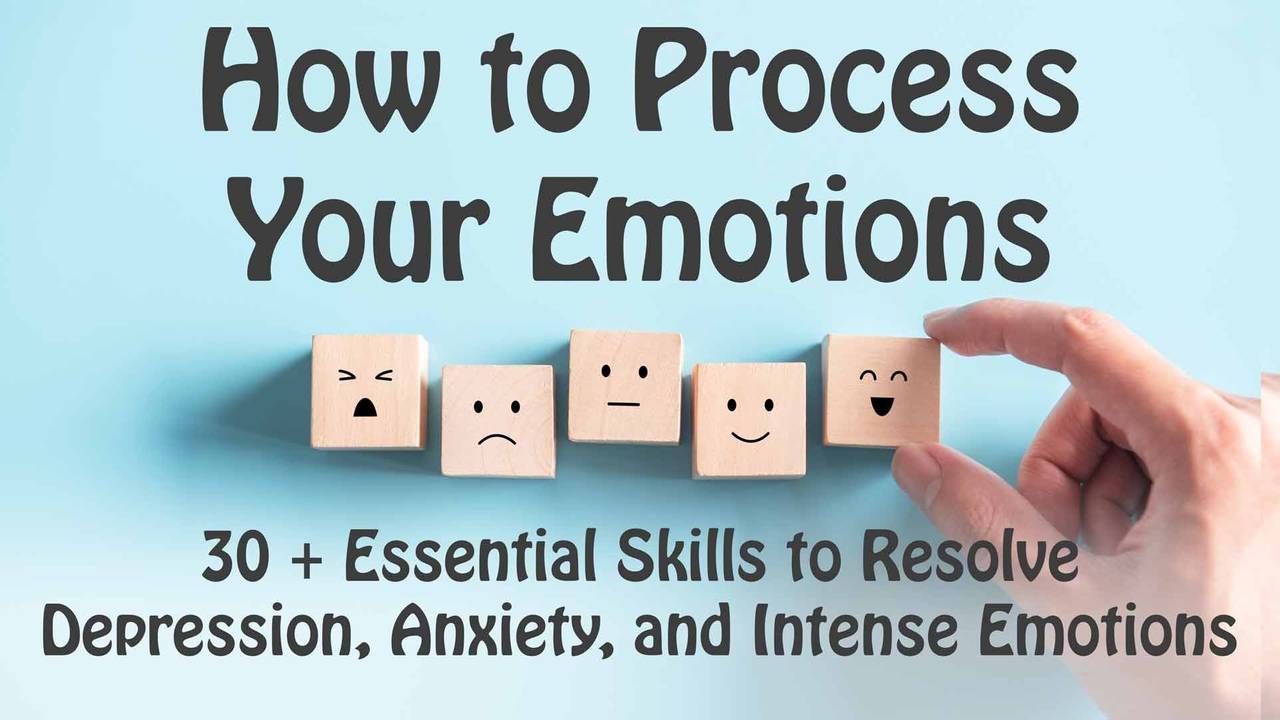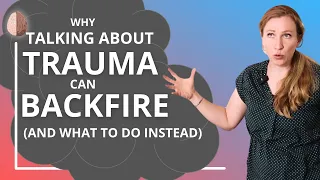This is the one skill I wish everyone had- Willingness- the ability to experience your emotions without needing to immediately escape or avoid them. Willingness is an essential skill from ACT- Acceptance and Commitment Therapy, it’s a practical way to learn to allow yourself to experience what you are feeling so that you can work through it.
Willingness
This section is all about getting better at feeling. This skill is the one skill that I wish everyone could learn, because it’s like flipping a switch on your emotions; switching off the struggle, and turning on peace with your emotions. The skill is called willingness. When you learn to use willingness, you can take all that energy that you were wasting fighting your emotions and channel it toward the life you want.
This is the last part from the foundation section of this course where you’ve learned how to notice and name your emotions without judgment, avoidance, and struggle. In the upcoming sections I’m going to teach you a dozen skills to resolve the painful, crappy, intense, distorted emotions that you’re feeling, but to get there, we have to be better at sitting with them as step 2 in the process, so hang tight.
Willingness Makes Painful Emotions Easier
As much as we may wish that we didn’t have to feel painful emotions, it’s just not possible. Emotions, physical sensations, and thoughts, are all part of who we are, a beautiful vivacious part of who we are. They’re essential to our ability to live and love and connect and care.
So for just a minute, let’s just compare painful emotions to a brick, this brick represents a painful emotion. Maybe it’s sadness, or chronic pain, or anxiety. When I just want to avoid it, try not to think about it, when I ask “Why me?”, when it comes up, that’s like holding this brick at arms length. How long do you think I can last? This is exhausting, I can feel the pain in my arm getting worse. So I may just try harder, exert more energy, more willpower. And that’s not sustainable, I become exhausted, but because I can’t let it go, I may end up collapsing.
People with depression and anxiety disorders, or sometimes people with chronic pain, or tinnitus, or other muscle tension aren’t lazy, they’re often people who work the hardest to fight their emotions, they struggle and put so much energy and attention into their feelings, but somehow, their actions backfire and they end up feeling exhausted and hopeless. In this section I’m going to teach you how bringing your uncomfortable emotions close to you, how sitting with uncomfortable sensations, can make them lighter, easier to bear, and sometimes, just sometimes, makes them go away completely. The skill is called Willingness, and I’ve seen it transform my clients from desperate and hopeless, into peaceful and hopeful.
What is Willingness?
Willingness means to sit with, and engage with, what you are currently experiencing. It’s not “liking” your emotions, or “wanting” to feel them, it’s a choice to allow yourself to experience what you are feeling. It’s allowing yourself to be where you’re at, even if it’s uncomfortable or painful. It means you’re willing to experience emotions you may instinctively not want to experience. Willingness is a practical skill that can be learned. In this section, I’m going to break it up into tiny little steps that you can practice.
You’ve probably heard that mindfulness and meditation, are helpful with depression and anxiety, and that’s true, they have been shown to be very helpful, but willingness is the key to why mindfulness works. Willingness is the actual thing that you’re doing that makes the difference. Before we break down the skill of willingness into steps, let me tell you a story from one of my friends, and how she used willingness in her life.
How Beth Practiced Willingness
Yesterday was a challenging day for me. I put my oldest son on a plane with the expectation that I won’t see him face-to-face for 2 years. (Her son left to serve a 2 year mission for his church.)
I’ve felt all my feelings in the past week regarding missing him, as well as mourning the loss of our current family dynamics. I grappled with him leaving the nest and finding out his parents are whackos, or him realizing all the ways I underperformed/hurt/neglected as his mom (he already knows ).
I spent yesterday trying to feel my feelings, allowing myself a whole day for mental health. Whenever I’d try to pull myself up “by my bootstraps” I’d reconsider, saying to myself what I tell my kids all the time, “You’re supposed to feel your feelings.” So I did, even though my M.O. is to cover up my feelings with busyness. It helped that I have people around me who I’ve watched do similar things and feel similar feelings, so there was a measure of acceptance for what I was feeling, a willingness to give my feelings the time they needed.
Today feels better. There’s access to easier, lighter, happier energies. I feel like I can breathe sighs of relief and smile. I feel like I can encourage and support myself and my family anew. I feel a draw to balance today with hope, connection, brightening the day in whatever way pleases me. And I wonder if I can feel this today because I honored my feelings yesterday.
In this example, Beth wanted to distract herself by keeping busy, she wanted to suppress her feelings of sadness, but instead she gave herself some space to work through them gently, and by the next day they had resolved.
So let’s talk about how to practice willingness- Describe, Don’t Judge– Don’t label what you are currently experiencing as good or bad. Remember all core emotions serve a function. So instead of judging with words like: good, bad, terrible, awful, great, best, worst, use words like: uncomfortable, unpleasant, painful, sensitive, tender, hot, cold, sharp, dull, warm, smooth, gentle, soft, or pleasant.
It is normal, healthy, and beautiful to feel emotions. This is a beautiful part of life. The path to healing from mental illness is learning to move through them, not avoid them.
What Willingness Is Not
Willingness is not: Wanting to feel pain. It’s not liking or agreeing with the pain. It’s not saying pain is what I want my life to be about. Willingness is saying- “This is what I’m experiencing right now, so I will tune in and experience it”. Paradoxically, this is the path that is most likely to free you from the intense painful emotions. If we go back to the processing plant analogy, we can’t turn a whole dead salmon into a delicious filet without looking at it, cutting it open, and removing the distasteful parts. We need to go through the process to get the results we want.
Practice exploring a healthy relationship with your emotions and your sensations. Be curious- you could say something like “Hello tinnitus, how are you today?”, or “Oh, hi anxiety, you’re allowed to be here, anything you have to say before you move on?” Curiosity is an antidote to worry. Describe where- Where is it located, are there other places in my body that feel differently. Describe what- Does it have a color? A sound? Does it change over time? Does it feel like a hollow space or a tingling energy?
Stay in your body as much as possible. This isn’t about figuring out the childhood roots of your problems. It’s not asking “Why am I feeling this way?”, that’s a step we’ll save for later. Overanalyzing can be a form of avoidance. With willingness we stay in the present moment and describe things as they are here and now.
Joey Remenyi, a neuroplasticity specialist and vestibular audiologist said “I have seen countless tinnitus clients resolve their tinnitus completely once they master the art of curiosity and connecting to their values. They no longer even notice the tinnitus despite the fact that it would still be there in the background of their minds. The brain has learnt to filter it out, and they are now able to get back to life and feel normal without worry or distress.”
6 Ways to Practice Willingness
- Instead of struggling with emotions, drop the rope and lean in- This means instead of pushing that emotional brick away, pull it close to you. It’s ok to struggle for something, to fight for your life, for your values, for your purpose, to live well and have a meaningful, purposeful life. It’s ok to struggle to do good in the world, but drop the struggle to force your emotions to change. Step away from the trap of putting all your energy into changing how you feel and put that energy somewhere more helpful.
- Be present– Instead of focusing on “How long will this last, what if this lasts forever?”, think “It is what it is right now”.
- Get back in your body– Name, describe, greet, acknowledge, be curious, and allow it to be there, just in the present. Sometimes it helps to put your hand on the place in your body where you’re feeling it. Breathe space into it. Imagine warmth, softness, light flowing into it. Notice your breathing, clench and tighten your muscles. Expand awareness to other parts of your body, other sensations. See if you can experiment, try to make it worse for a moment. Say “Bring it on anxiety! Do your worst!” this is called “putting the kettle on”.
- Be compassionate- Be compassionate to yourself and your emotions. “How am I treating my body and my anxiety? Am I being kind?” The sensations or emotions may or may not go away, but being mean to them will surely make them worse. You could say something like this to your emotions- “Take as much time as you need.” It’s such a paradox. Like with a child who has an owie–you just hold them, hug them, kiss their owie, and that makes it feel better. There is something immensely healing about wholehearted empathy. In my religion this is called The Bowels of Mercy- feeling something to your gut heals it. It’s that amazing healing that happens when someone sincerely listens and says, “I know how you feel. That must really be difficult.”
- Watch out for your “Stories”- All humans have automatic negative thoughts and worries. “Why me? Why is my tinnitus so loud? Why am I so sad? Is there something wrong with me?” Is this a sign that something is actually wrong? There’s a time and a place to explore that. Do these sensations have a message for me, something that is asking to be addressed, to be changed, or healed? Often, those intense automatic negative thoughts are exaggerated or come up even when you’re healthy, safe, and things are ok. When really intense thoughts come up, notice them as thoughts, acknowledge that they’re there, but don’t overthink them, don’t dwell on the thoughts themselves. Overthinking can be a habitual form of avoidance. Instead, shift your attention back to your body–how the emotions feel in your body, and that it’s ok, you can feel what you’re feeling right now. It may be unpleasant, but that doesn’t mean that it’s bad. Emotions are uncomfortable, but emotions won’t harm you, they don’t damage you. Avoiding emotions, struggling against them, or demanding that they go away can lead to behaviors that harm you. So for example, if you’re feeling anxiety about public speaking, you can still give a good presentation even if you’re nervous. But if you have the rule that “I’m not allowed to feel anxious”, then you may avoid giving a presentation, which may harm your job, or you may use drugs to calm yourself down, which can negatively impact your life. Even the ultimate form of harm, suicide, isn’t caused by emotions, but by the desperate need to escape emotions. I’ve seen over and over when a person develops willingness they no longer feel suicidal.
- This is not the same as Wallowing, surrendering, giving in, or giving up- Wallowing is all about letting go of your ability to choose allowing emotions to make your choices, giving up, labeling yourself as a victim, as helpless, as broken, and projecting your current emotions into the future. Willingness is all about noticing what you’re feeling, and then noticing that you’re noticing…that there’s a deeper you who watches yourself watching and makes choices about what to watch. This opens up space to make choices.
You Are the CEO
You are the CEO of your brain. You are not in control of what thoughts pop up, or what sensations show up, but you are in control of what you focus on, and when you focus on something it gets louder. The key to healing is to notice, to acknowledge your uncomfortable sensations, and then to make a choice about what you are going to pay attention to.
When we constantly scan ourselves, “How is my anxiety today?”, or “How is my depression today?”, we send the message to our brain that anxiety and sadness are the most important things, and our brain responds by putting more energy into them.
Instead of speeding up to avoid or focus on our feelings and sensations, give yourself just a little more time to process them throughout the day.
Emotions serve an important function sometimes, and other times they’re just waves that come and go. The one thing that is sure to make them worse is fighting them or ignoring them.
Shift to Something More Important to You: Your Values
Shift your focus to what is most important to you–peace, calm–scan your body for sensations like that. Instead of focusing all your energy on holding that brick at arm’s length, put your energy toward the things that matter most to you. So if you value being a kind mother, sit with your kids on the floor, put your distractions away, and look them in the eyes and just be with them. When you notice the uncomfortable emotions or sensations come up, just acknowledge them and put your attention back on your values- your children.
After you’ve acknowledged your painful sensations or emotions, shift your focus back toward your values and the things that bring you joy, peace, and love. Remember, what you pay attention to you get more of. This is not avoidance or distraction, but intentional use of your mental energy. This is how you take your power back. When you put your attention on what matters most in your life, you free yourself to live a meaningful and fulfilling life. Willingness frees you to do that.
How to Practice Willingness
Try this with some physical sensations–you may be surprised how much of an emotion is really made up of physical sensations. Try doing a deep stretch, holding a cold ice cube, or doing wall sits, and just do that uncomfortable thing, practicing willingness while you do it.
Summary
Willingness: the one skill that I wish everyone had if I could only teach one skill!
- Willingness means to sit with and engage with what you are currently experiencing. It’s not “liking” your emotions, or “wanting” to feel them, it’s a choice to allow yourself to feel what you are feeling. It’s allowing yourself to be where you’re at, even if it’s uncomfortable or painful.
- 6 Ways to Practice Willingness
- Drop the rope
- Be Present
- Get back in your body
- Be compassionate
- Watch out for your “Stories”
- This is not giving up- it’s about noticing what you’re feeling
- You are the CEO of your Brain
- Shift your energy from struggle to valued direction





